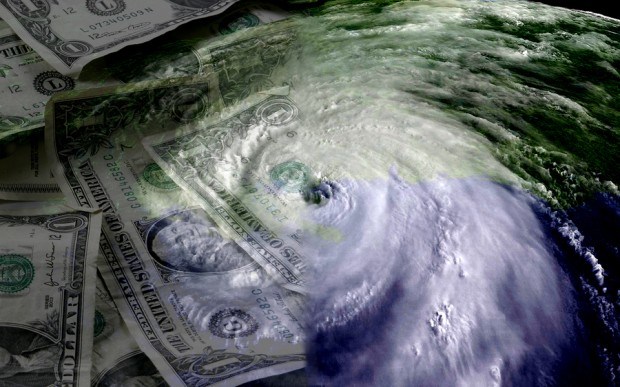A perfect storm is brewing. As hurricane season ramps up on the East Coast, a new report from the Insurance Research Council (IRC) reveals that many homeowners insurance customers don’t understand how hurricane deductibles work, and a significant number don’t even have a firm grasp on the general concept of a deductible.
Insurers have a unique opportunity to increase awareness and understanding of these issues among policyholders, especially those who don’t take the time to educate themselves on their own coverage. Unless policyholder awareness can be increased, we may once again see all-too-common issues during this hurricane season—hostile customers and negative press coverage for insurance agencies.
The IRC report gauged how much customers in five states prone to hurricanes know about their hurricane insurance coverage. One-third of homeowners had never heard of hurricane deductibles, and 40 percent mistakenly believed their policies would cover flood damage from storm surges. Perhaps most alarming, one in four respondents could not correctly identify the definition of a general deductible.
Many were unfamiliar with the details of their own policies and hurricane coverage. Four in 10 respondents with percentage-based deductibles didn’t understand that the amount was based on the value of their home, and more than a third didn’t know the specific percentage rate that determined their deductible. The results were published in the report “Public Understanding of Hurricane Deductibles, Need for Consumer Education Persists.”
An Industry Wake-up Call
The IRC surveyed homeowners in New Jersey, North Carolina, South Carolina, Florida and Texas. Knowledge varied considerably from state to state, and researchers suggested homeowners in more hurricane-prone areas may be more aware of coverages and deductibles than those in states like New Jersey, where a hurricane may be less likely.
However, many will remember Superstorm Sandy in 2012, which caused about $75 million worth of damage in the United States, primarily in New York and New Jersey. That storm created serious confusion among policyholders and the media, in large part because it was not technically a hurricane when it made landfall.
That meant policyholders were not required to pay the hurricane deductibles in their policies. Yet even after all the media coverage of Sandy and its aftermath, many homeowners still don’t understand the specifics of their coverage.
The National Oceanic and Atmospheric Administration predicts an “above-normal” hurricane season in the Atlantic this year, with two to four major hurricanes and up to 17 named storms. The insurance industry could face a much more hostile customer base if, unlike Sandy, one of these storms does trigger hurricane deductibles and customers don’t know the specifics of their policy—or don’t understand the concept of a deductible or whether flood damage is covered by their policies.
Set Clear Expectations With Education
How can the industry better educate customers to improve awareness and understanding of hurricane deductibles? According to the IRC report, many insurers provide a cover page on policies reminding customers that their coverage includes a hurricane deductible (a requirement in some states). According to customers surveyed, that’s the most effective way to remind them. However, 20 percent of respondents said they weren’t aware of insurers using any of the notification methods provided in the survey. In some cases, survey respondents may have missed or ignored the communications. Regardless, the results clearly indicate a gap in awareness.
To further enhance customer awareness of the content of their homeowners insurance policies, consider incorporating these five tactics into your company’s customer education practices:
- Create and share simple yet high-quality educational material. Agencies or individual producers can come up with talking points that simplify insurance-speak into layman’s terms. While you’ll still need to provide the legal language, doing this removes a significant hurdle for many customers. In many cases, insurers may already have good resources that agencies can pass along.
- Formalize the process.Make education a dedicated part of the insurance-buying process. For example, establish the practice that every agent must ask new customers whether they understand flood insurance and hurricane deductibles before completing a homeowners policy.
- Use every channel at your disposal.While a majority of agencies may include hurricane coverage specifics on a policy cover page, they can tap into many more communication channels. Payment notices, direct mail, email and social media are all effective ways to reach customers with the collateral you’ve developed. All of this education can also live on your website as blog posts or FAQs that customers can read for more information (and through which potential customers can see the extra level of value you provide).
- Offer customer-specific information. Pitney Bowes points to the growing trend of deepening relationships between insurers and customers as an opportunity for education. Customer relationship management tools and an ever-increasing amount of customer data can be used to create tailored messages for specific customers in specific situations. For instance, instead of a generic overview of hurricane deductibles, an insurer could send a message to a customer letting him or her know that a hurricane is forecast for a specific day, along with the exact details of the policy.
- Expand your team of educators. It shouldn’t fall solely on agents and brokers to educate clients about policy components like hurricane deductibles. Claims professionals and customer service representatives should also be able to speak knowledgeably about various coverage elements and to pass key information on to collateral customers.
An Industrywide Imperative
Coverage elements like hurricane deductibles are inherently an industrywide issue, not just because most insurers offer similar types of coverage but also because they’re triggered on a large scale. If a storm makes landfall as a hurricane, all policyholders across many insurers are required to pay a hurricane deductible. If the storm isn’t technically a hurricane when it hits land, homeowners with many different insurers do not have to pay, as was the case with Superstorm Sandy.
This kind of all-or-nothing situation demands an industrywide approach to educating customers. After a major weather event like Superstorm Sandy, there’s often a disconnect between how those of us who work in the insurance world feel about our role in the recovery and how we’re perceived outside the industry. Every interaction that agents, brokers, customer service reps and claims professionals have with our clients is a chance to educate them on the value our industry provides.





















 U.S. High Court Rejects $2.46B Boy Scouts Sex Abuse Settlement Challenge
U.S. High Court Rejects $2.46B Boy Scouts Sex Abuse Settlement Challenge  Homeowners Critical of FAIR Plan, State Farm A Year After LA Wildfires
Homeowners Critical of FAIR Plan, State Farm A Year After LA Wildfires  Surge of Supercharged Hurricanes Prompt Call for Cat 6 Classification
Surge of Supercharged Hurricanes Prompt Call for Cat 6 Classification  Slideshow: Carrier Management’s 2025 Top Editor’s Picks (Unlocked)
Slideshow: Carrier Management’s 2025 Top Editor’s Picks (Unlocked) 



